The history of the charts is littered with records that are just awful, but who bought them?
Life’s like that, isn’t it?
Sometimes it’s the really shit records that lodge in your memory, the ones that leave you gasping. Incredulous as to who actually bought these records. I’d really like to meet those people, see what they look like, find out what makes them tick, ask them to articulate what it was that motivated them to commit such an act of wanton cultural vandalism and then berate them publicly for their appalling lack of taste and intelligence (Yes, I mean you Queen fans). Sounds a bit Nazi, maybe, but you know what I mean.
Often these records are one-hit-wonders that squeezed into the charts by virtue of some twist of fate, something in the wind that carried them out of the pit of obscurity that they richly deserved to be consigned to forever. And yet… sometimes their awfulness provides us with a frisson of perverse pleasure in the same way some people get pleasure from sado-masochism. It’s strange how a straightforward exploration of an awful hit can mutate into something even more hellish. A bit like the thing in Quatermass that just kept growing and growing into some unspeakable ghastliness….and you couldn’t help but watch.
So here is my random list of dreadful hit records. There is no order or structure to the list, I will just continue to add others when I have the misfortune to remember them at inopportune moments. Please feel free to make suggestions.
No.1
Naughty, Naughty, Naughty by Joy Sarney (1977, No. 26)
I chose this one-hit-wonder as it tells the story of, oddly, a woman’s desire for a violent misogynist called Mr. Punch. It has Mr. Punch performing diabolically in the background, has no discernible melody or musical structure, has an intensely irritating faux reggae beat and, unbelievably, outsold The Damned, The Sex Pistols and The Clash in 1977.
Joy Sarney was a session singer from Southend but the individual who provided the Mr Punch voice, or ‘Professor’ as all Punch and Judy performers are called, is unknown. That said, I distinctly remember both the lovely Joy and the ‘Professor’ being interviewed on Radio 1’s Newsbeat at the time the record was in the charts. ‘And what do you know about making a pop record?’ was the probing question offered by the giggling interviewer. ‘Absolutely nothing!’ replied the Prof to great hilarity.
As is often the case, however, a further exploration of the record unravels a rather interesting MOR backstory (at least, to the likes of me…). The waxing was the only hit ever for Alaska Records, which was owned by one John Schroeder. Now this character reportedly ‘discovered’ Helen Shapiro and wrote two of her first hits, Don’t Treat Me Like A Child, (which nowadays sounds a bit dodgy given she was only 14), and the formulaic Walking Back To Happiness, which got to No 1 and for which he received an Ivor Novello award in 1961. His CV becomes a little more interesting in a bizarre way, when in 1959 he produced the UK’s entry to the Eurovision Song Contest, Sing Little Birdie by Pearl Carr and Teddy Johnson. Although coming second, the song gained widespread prominence when it was mentioned in the Monty Python sketch ‘World Forum’, in reply to the question, ‘What won the Eurovision Song Contest in 1959?’, Mao Tse Tung answered ‘Sing Little Birdie.’ In actual fact, it didn’t win which just adds a bit more to this truly brilliant Python sketch.
In 1965 Schroeder teamed up with band leader Johnny Pearson at Oriole Records and between them formed Sounds Orchestral who released 14 preposterously successful albums of easy listening orchestral arrangements of well known pop songs and film and TV themes. Johnny Pearson is a moderately interesting figure. As well as being the leader of the Top Of The Pops Orchestra for 15 years, he helped launch the career of Cilla Black (well, nobody’s perfect) and was musical director for a number of Dusty Springfield shows in the 60s (much more like it). He also had a top 10 hit in 1973 with the wistful instrumental track ‘Sleepy Shores‘, theme tune from the BBC1 Welsh village doctor series starring the great Nigel Stock, Owen MD. (A bit like Doctor Finlay’s Casebook, but in Wales). He arranged Led Zeppelin’s Whole Lotta Love which became the TOTP theme throughout the 70s.
Alaska Records also brought out an opportunistic version of Paul Simon’s The Boxer by 70s Liverpudlian boxing favourite John Conteh. Like 99.9% of Alaska’s releases this record also did not chart but it’s an interesting reminder of one of the ubiquitous personalities of the 70s. As well as being one of the figures on the front cover of Wings ‘Band On The Run,’ LP, Conteh also appeared in 70s films ‘Man At The Top‘ and, strangely, ‘The Stud‘ with Joan Collins in a career low.
But back to the execrable Naughty, Naughty, Naughty. Anyone with a rudimentary knowledge of Punch and Judy shows will know it as a rather sinister and violent seaside attraction dating back to the 1660s (Samuel Pepys mentions the first one in his diaries). Features of the act include dropping or hitting the baby, Judy and Punch battering each other with the ‘slapstick’ (some saw this as domestic violence) and included malevolent characters such Jack Ketch, the Hangman, a ghost, a skeleton and the devil. At one time Mr Punch even had a mistress known as ‘Pretty Polly.’
The odd lyrics even suggest domestic violence.
‘He’s been in trouble with the law for Grievous Bodily Harm..
His temper’s just for show..
I’m his puppet but he won’t pull my strings
But it was the 70s.
The most intriguing interpretation of the lyrics was one from an ‘anonymous’ contributor to an internet message board discussing the song. ‘I always thought this was a very rude record about anal sex – it’s all there in the lyrics “That ain’t the way to do it” – “Oh yes it is!”. Also the singer’s name Joy Sarney (ie joy sandwich) must be a clue.‘
And after that, there is nothing else that need be said.
No. 2
Little Girl by The Banned (1977, No. 36)
Now the first thing to say is that this isn’t a particularly bad record, the song is actually quite good. But everything else about it is phoney.
Released just after the zenith of punk, it tried to jump on the bandwagon and made a pretty damn poor job of it. The song was originally released in the US in 1966 by Syndicate of Sound where it reached number 5.
A bunch of prog rock musicians, some of whom were in the medieval ultra-prog group Gryphon noticed that Punk and New Wave records were selling more than they were, so decided it was worth a punt to pretend they were (ageing) punk musicians and release a record.
So using the Observers’ Book of Punk Rock Credibility as a guide they found a song that sounded vaguely ‘punky’, they went down the Kings Road and secured some second-hand jackets and thin ties, they bought some fashionably ironic sunglasses in Debenhams, had their shoulder-length hair cut and, hilariously, gave themselves punky, anti-establishment names.
- Paul Aitken (Drums and vocals) became Paul Sordid (Very rebellious!)
- John Davie ( Bass) became John Thomas (fnaar, fnaar!)
- Richard Harvey (Guitar/vocals) became Rik Mansworth (see what he did there?)
- Pete Airey (Guitar/vocals) became Pete Fresh (not so good)
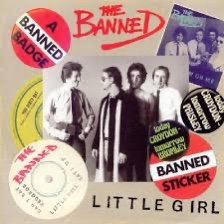
This is what they pretended to be… 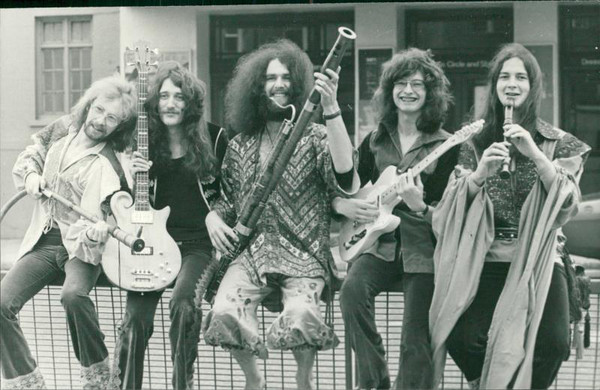
..and this is what they really were
They even came up with a punning anti-establishment name for the group, on The Band/ Banned, as well as pretending to publicise their anarchistic credentials. Laugh, I thought I’d never start. And this, ironically, was what punk was created to oppose.
But at least they only got to No. 36.
No.3
Renta Santa by Chris Hill (1975, No. 10)
At a stretch I can understand why some misguided people, though not many, will have parted with some cash to have a copy of numbers 1 and 2 in this list of Hit Parade ignominy. I cannot, for the life of me, however, understand who would have bought this pile of reindeer shit for their record collection. It got to number 10 in the days when singles shipped bucketloads, so it must have sold thousands!
I have to admit to an unnatural hatred of Christmas records. Maybe it’s just the fact that you are bombarded with Chris De Burgh‘s quasi-religious bollocks A Spaceman Came Travelling in any branch of Morrison’s you might wander into in October, or Mary’s Boy Child burrowing into your psyche while buying tins of Chappie in Tesco’s on Guy Fawkes’ Night that gets on my festive tits. But it’s also the cynical opportunism of Christmas singles. Gullible people used to buy them just because someone was wearing a Santa hat and beard on the cover.
Chris Hill, a DJ when DJs were intensely irritating i.e. Steve Wright, Peter Powell, Bruno Brooks etc. Mind you, they still are) came up with the gossamer-thin idea of creating a comedy record through the use of clips from other records. He got another idea (which he called ‘the other idea’) that if he mentioned the words ‘Santa‘, ‘Christmas‘, and ‘Reindeer‘, suckers would buy it in their thousands. And he was right. He even repeated the confidence trick the following year with Bionic Santa, tapping into the popularity of the Six Million Dollar Man when everything seemed to be ‘bionic.’ And that also got into the top ten! Had he been a year earlier he would, no doubt, have released Kung Fu Santa using the same clips and the same tired old format, but just chucking in the word ‘Grasshopper‘ here and there.
I know I’m being very critical about the cynicism of this record but I’ve not even mentioned the worst aspect of it yet. It’s painfully, excruciatingly, mind-numbingly unfunny. It’s so unfunny it could have been written by Steve Wright. Or Michael McIntyre. Or him from Mrs Brown’s Boys.
In short, about as funny as a burning orphanage at Christmas.
No.4
If by Telly Savalas (1975, No. 1)
I know these are supposed to be about bad records but sometimes ‘bad’ can be perversely good. And there’s something about this record I find compulsive, in the same way you can’t help looking at a crash on the motorway. You know you shouldn’t…
It’s always been a showbiz rule of thumb that if you become well-known, even for a short time, you have to make a record. There are a number of reasons for this. Firstly, and probably most importantly, a record producer somewhere will see the main chance of making a stack of cash for a minimal amount of work on someone who is ‘hot’. Secondly, the artist’s management will see it as a good way of getting the artist ‘out there’ and cementing his/her popularity and thirdly, if the record is successful there could be a whole series of lucrative hits and maybe even an album! So, in short, records released by famous people are nothing to do with artistic integrity.
The three-TV channel decades of the 60s and 70s meant that if an artist became popular thanks to the show they were in, they became VERY big indeed and such was the case with Telly Savalas and his hit show, Kojak.

Telly Savalas was already an established Hollywood actor having had starring in roles in The Birdman of Alcatraz (for which he received an Oscar nomination), The Greatest Story Ever Told as Pontius Pilate (which Hollywood actor wasn’t in that?) and as Blofeld in the excellent On Her Majesty’s Secret Service. His decent roles dried up a bit in the early 70s and TV was beginning to dominate people’s viewing habits. Then Kojak came calling and he became a phenomenon. Kojak was really nothing special as New York- based detective serials went, others such as McCloud, Tenafly, McMillan and Wife and Banacek were in competition. But Savalas made the role his own and from 1973 it became required viewing for a winter’s Saturday night for nearly ten years. Whether you liked it or not.
Clive James commented on the Kojak phenomena and observed:
Telly Savalas can make bad slang sound good and good slang sound like lyric poetry. It isn’t what he is, so much as the way he talks, that gets you tuning in.
And it was his catchphrase that really caught on. ‘Who loves ya baby?’ sounds even cliched today. You can imagine how tiresome it became in the 70s. And his penchants for lollipops, which apparently were, in real life, a way of trying to get him to curb his smoking. The programme also ramped up Theo’s super-attractiveness to women with him having a glamorous, often non-speaking, ladyfriend driving him around in a sports car every week. Telly Savalas was as popular as Kung Fu and Glamrock combined in the 70s.

So a record was only a matter of time. And it was country music producer Snuff Garrett, who had worked with Sonny and Cher, Tanya Tucker and Nancy Sinatra who stepped in to give the public what, he thought, they wanted. But hang on a cotton-pickin’ moment. Telly can’t sing a note! Not a problem. He can use that big, sexy, New York voice to speak the lyrics.
This slight hitch had come up before. At the height of Star Trek‘s popularity in 1968 William Shatner was enticed into a recording studio only to find he was tone deaf. In desperation he was asked to deliver the lines in a suitably faux Shakespearian style, which he, of course, was only too happy to do and the rest is camp history. In fact, one track from his album, the wonderfully titled, The Transformed Man, Lucy in the Sky With Diamonds, was voted the worst Beatles‘ cover ever by a Music Choice 2003 poll. Had these people no sense of irony, for God’s sake? These are just a few reasons why this album is really worth listening to.

It may be ridiculed today, as it was on its release but in Q Magazine’s list of the 50 worst albums of all time it only reached a fairly impressive 45. A couple of tracks stand out. Mr Tambourine Man has to be heard to be believed and there is some serious acting going on in It Was A Very Good Year.
But back to Telly.
The video that accompanied the record is particularly excruciating. Telly stands there, puffing on a cheroot, lip-synching badly, in front of an enormous Amazonian blonde, so white she’s almost translucent. Just how does she keep a straight face? How did he keep a straight face? And every so often Telly has to look to his left just to catch his cue cards. My favourite bit is just after the line ‘..and when the world was through…nnnnnn.’ What could he be thinking of? But he just about manages to take it seriously, so good on him!
Now it would be unfair to describe Telly’s effort, Bread’s If, as one of the worst covers of all time, but it is pretty awful. He got away with it in 1975 because he was riding an irresistible popularity wave, but anyone listening to it now and knowing nothing of Kojak would wonder what the hell was going on.
Telly’s waxing spawned a comedy parody at the same time of If’s release by a couple of, jokers is quite the wrong word, we’ll call them bozos called Yin and Yan which actually got to no. 25 in the charts and was, arguably, worse than Telly’s effort. The problem with comedy records is they’re not funny and this was a prime example. Particularly American comedy records. But, due, sadly, to Telly’s mega-fame, even this execrable attempt was relatively successful.
But a talking record only has so much mileage and his follow up to the super-successful ‘If‘, pretty much bombed. The formula was exactly the same, an MOR classic, this time You’ve Lost That Lovin’ Feelin’, with Telly’s sultry vocals and a Mantovi-type orchestral strings backing. But the great British Telly public had had quite enough of this type of opportunism and it reached a high of 47.
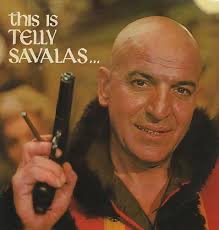
Kojak lasted another 3 years until it reached its, probably overdue, sell-by date. Telly’s career slowly declined and he even narrated a British travelogue series entitled ‘Telly Savalas Looks at...’, his beady eye taking in the exotic landscapes of Portsmouth, Birmingham and Aberdeen.

Many other actors released awful singles in the years that followed but few did bad quite as stylishly as Telly, though.
No. 5
Grandma’s Party by Paul Nicholas (1976 No. 9)
It seems rather churlish to condemn such a prolific and, in many cases, noteworthy artist like Paul Nicholas, but this is a truly dreadful record.
Released in 1976 which was a pretty dire time for music (see above) it was his third release in a row which made it into the top 20, starting off very poorly with Reggae Like It Used Be (how did it used to be?), becoming worse with Dancing With The Captain and hitting the depths with Grandma’s Party.
Even before this scraping of the musical barrel Paul Nicholas had already had an impressive career. His first abortive attempt as a pop star in the early 60s included being discovered by Screaming Lord Sutch and joining his backing band The Savages. He then went solo, recording an unsuccessful single entitled ‘Over The Wall We Go‘, written and produced by a struggling young musician called David Bowie. He then made it into West End musicals including starring roles in Hair and Jesus Christ Superstar amongst many other musical shows. He played nasty Cousin Kevin in Ken Russell’s film of The Who’s Tommy in 1975. And then he decided to try for a pop career again…

Someone in his management company obviously thought he needed an image and the bowler hat and cane was introduced. As a musical actor this probably wasn’t a bad idea but such performance props often result in a certain type of music. And such was the case here.
Next, a couple of writers were brought in to come up with suitably light, undemanding material that would appeal to the Top of the Tops teenage audience. Step forward, British pop writers Bugatti and Musker. During their career B and M (or The Dukes as they were sometimes called) wrote songs for lightweight artists such as Sheena Easton, Cilla Black, Twiggy and The Nolans. But on a slightly upmarket note they also wrote songs for Lee Hazlewood and Nancy Sinatra, Eddie Kendricks and Chaka Khan. But Paul Nicholas‘s efforts were very much at the superficial end of the MOR scale.
It’s noticeable that Nicholas’s three hits were of a similar nature, unchallenging, slightly melodic and allowing him to perform his schtick with the bowler hat and cane.
Grandma’s Party was irritating for a number of reasons. Firstly, its melody was gossamer-thin to the point of being undetectable, secondly it sounded exactly like his previous other hits and, most heinously, it perpetuated a number of myths. What kind of saddo could possibly be excited about going to party thrown by their grandma? How could it ever be described as the ‘event of the year‘? Don’t they ever get out? And would a party guest be playing the saxophone whilst simultaneously swinging on the chandeliers? Who is this grandma who has chandeliers in her house anyway? Imelda Marcos?
I’m sorry, but it just doesn’t ring true for me. And it stank of yet another opportunistic attempt at making money through the least amount of effort for the maximum return. (See various records above).
On the strength of these awful records Paul Nicholas received the Granada TV Order of the Poisoned Chalice. His own Muriel Young– produced tea time pop show! (See Bowie: The First Time). Running for only one series it featured a few decent guests such as Wings, Jimmy Cliff, Thin Lizzy and Darts but it was never going to launch him to pop superstardom and he eventually returned to the more familiar waters of West End musicals and TV sitcoms. Everyone of a certain age remembers Just Good Friends although, like me, they may not have watched it. But what about Two Up, Two Down from 1976? Starring Nicholas and his TV wife the (very) unlikely Su Pollard (Su Pollard?!), it ran for only one series.

In his defence, this record was probably the aesthetic nadir of a long, particularly prolific and successful career and he is still performing. But I prefer to remember him from this time as nasty Cousin Kevin.
He was so much more likeable.
No.6
The Carnival Is Over by The Seekers (1965 No. 3)
I really couldn’t stand The Seekers. Even now when I see them they make me feel nauseous. To be honest I could have chosen pretty much either of their 8 top twenty hits between 1965 and 1967 but I picked this one mainly because it’s so DULL and it’s got a NICE melody, it sounds exactly like all their other hits and it’s a complete DIRGE! That should be enough to be getting on with.
What has caused this pathological dislike of The Seekers though? Who could possibly take offence at this nice, well dressed, clean and wholesome group of Aussies? Well, me for one. And it’s exactly because of that, their niceness and the anodyne nature of their music. It’s the sort of band your grandparents would like because they played NICE tunes and they looked NORMAL (you know, suits, ties, short back and sides, Laura Ashley dresses).
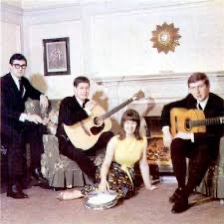
They were the sort of band that stopped more interesting acts breaking through in the mid-sixties by releasing anodyne, unthreatening, harmonic fare, like this utter tosh.
Lead singer Judith Durham was born to be featured on the cover of Woman’s Own. She had this very affected vocal style and I think she really fancied herself, thought she was a cut above every other singer in the charts and the media feted her because she seemed so NICE and NORMAL. And those awful summery dresses she wore! Her megalomania was indulged by all the media attention she received. Inevitably, she decided to go solo in 1968 and she subsequently had one No. 38 hit and that was the last we heard of her. For The Seekers the carnival really was over.
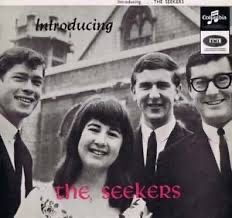
And then there was the guy (in fact, his name was Athol Guy– silly name) on double bass who wore those big 60s glasses and sung backing vocals. People at the time used to think he was Judith Durham‘s brother, but he wasn’t. It was one of these many popular misconceptions that went around in the 60s that no one really bothered to check out whether it was true or not.
And a guy called Keith Potger who played guitar. Now he may have been the most irritating of all because when they, mercifully, decided to split up in 1968 he clearly believed the world wouldn’t be able to survive without The Seekers. So he set about forming The ‘New’ Seekers, as if the old Seekers weren’t bad enough. Now don’t get me started on The New Seekers, mainly because I will return to them as they deserve their own space in this bitter litany of blog obliquity.
To be fair, most of their songs were written by ace tunesmith Tom Springfield, brother of the amazing Dusty and ex-member of The Springfields. And Georgy Girl (1966), from the very interesting 60s film of the same name, was a great tune which got to No. 2 in the US and No. 3 in the UK, was even nominated for an Oscar for Best Original Song. Co-written with Jim Dale (of Carry-On fame) it lost out to the legendary John Barrie and Don Black‘s easy listening classic ‘Born Free‘, a song that became Matt Monro‘s theme tune (more on Matt later). But Georgy Girl was such a great song and the production raised it from the mundane so pretty much any band would have been successful with it.
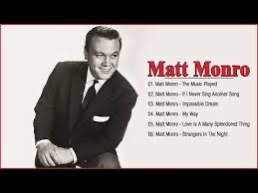
For their return to Australia concert in 1967 200,000 turned up at the Sydney Myers Music Bowl in Melbourne to see them! But I suppose there wasn’t a huge amount of competition in Oz at the time other than Rolf Harris. That said, their farewell concert in the UK was broadcast live by the BBC and 10 million tuned in.
The Best of The Seekers LP knocked The Beatles (white album) off the top of the album charts and stopped the Rolling Stones getting to No. 1 with Beggars’ Banquet. In all, it stayed in the charts for 125 weeks. Which just goes to prove that musical maxim (that I made up), the blander you are, the higher you fly..
What used to really drive me nuts, though, was when I’d be watching Top of the Pops in the mid-60s. The Seekers would come on and grown-ups would always say. ‘Now they’re a nice, clean, well-dressed group and that’s a nice song. Why don’t you like them rather than those other dirty buggers?’ ‘Because they’re fucking shit!!!‘ I’d repeat over and over in my head.
I’m not sure I ever got over it.
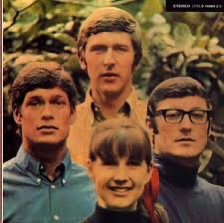
No. 7
Isn’t She Lovely by David Parton (1977 No. 4)
The first thing to say about this record is that it’s far from being a rubbish song and its success is not inexplicable. But there are most certainly rubbish and inexplicable elements to it. But where to start…..?
The song is now a pop classic and is known by pretty much everyone. It was released by the legendary Stevie Wonder on his classic 1976 album Songs in the Key of Life and was probably the most played track from the album on the radio at the time. It seemed an obvious single but clocking in at over 7 minutes, Stevie didn’t want to cut it down to suit the single format and released Sir Duke and I Wish from the album to great chart success. The song reeked of Wonder-esque class and sophistication, as it still does. So how did it get into the hands of a white-suited, moustachioed working men’s club warbler from Newcastle-Under-Lyme? A very good question and one that continues to elude.
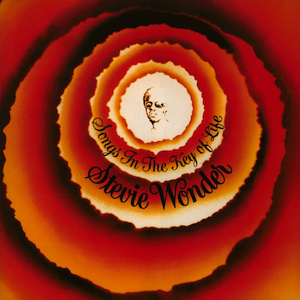
David Parton’s pop credentials were flimsy to start with. A sometime collaborator with the legendary Tony Hatch (more on him later), Parton wrote a couple of successful songs for New Faces winners Sweet Sensation, the No.1 Sad Sweet Dreamer (1974) and the No.11 soundalike follow up Purely By Coincidence (1975). And that was about it…until Songs in the Key of Life was released and (here’s the inexplicable bit) he managed to get the rights from Motown to release a version of the song. Initially, the lead singer of Sweet Sensation, Marcel King, was supposed to do the vocal but reportedly couldn’t get to grips with the song, leaving the door open for producer David Parton to do his own version. King’s vocal must have been pretty dreadful if Parton’s vocal was better. It beggars belief that Motown would sell the rights of a brand new, instant pop classic by one of the world’s greatest music writers and performers to an unknown singer and producer in the UK, but they obviously did.

On listening to this awful version it seems inexplicable that such a terrible vocal and utterly bland production could be a hit, a No. 4 hit at that, but the song had been played to death on the radio and Stevie Wonder wasn’t releasing it as a single, so for many people it was not the next best thing, but the only way of possessing the song in single form. One does wonder why many of these people just didn’t buy Stevie Wonder’s album but I suppose that was a much bigger investment as a double album would have cost at least a fiver!
Stevie Wonder’s song is a hugely personal one, celebrating the birth of his daughter and, again, you have to ask why he’d let some bozo in the UK have it, that’s if he was ever consulted, though his status at Motown suggested he must have had a say. Given that David Parton took the song, ripped the soul, the guts, the sophistication and the personal element from it qualifies it, in my book anyway, as a completely rubbish hit or at least an utterly awful version of a classic song. His rather sleazy TOTP stage performance also implies he didn’t even understand the lyrics, changing the meaning of the song to one of ogling some burd in a sticky-carpeted, sweaty disco in Newcastle-under-Lyme with The Hit Man and Her in attendance. He’s straining so much to hit the notes Stevie Wonder hits so effortlessly, it looks like he might to shit himself.
This version was the 54th biggest seller in the UK in 1976 which, to be fair, says more about the Great British Record Buying Public than Parton himself. It turned into a very nice little earner for him but if there is any justice at all emerging from this sad, depressing episode, the song only got to 105 in the US singles charts.
No. 8
Mozart Symphony No. 40 by Waldo de Los Rios (1971 No. 5)
Can I shock you? I like Mozart.
But what was he doing in the pop charts of 1971? It just underlines the point that the 70s were a weird time for pop music. So much strange stuff was successful and how could an orchestral version of a Mozart melody not just get into the charts but get to number 5 for god’s sake? So this isn’t so much a rubbish song, how could you describe anything by Mozart as rubbish, it’s really a completely inexplicable hit.
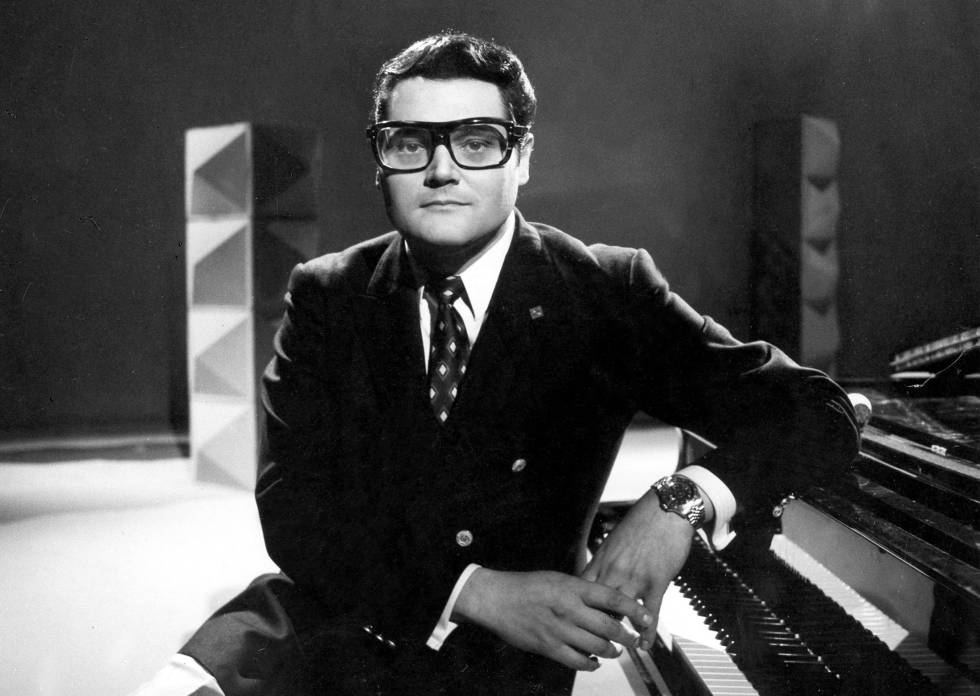
So many questions, as always. But it did get in the charts and the guy responsible was Argentinian composer and arranger Waldo De Los Rios who demonstrated a lucrative ability to create easy listening versions of orchestral classics. So much so that the BBC used two of his creations for very different programmes. Firstly, his version of Mozart’s superb A Musical Joke was used as the theme to the utterly tedious and interminable Horse of the Year Show. Even Mozart seemed to be taking the piss out of it. This lugubrious equine annual bunfight even bumped Monty Python’s Flying Circus from the schedules and became a running gag for years on the programme. His version of Eine Kleine Nachtmusik was adopted as the theme for BBC Radio 4‘s long-running Brain of Britain, prompting presenter Robert Robinson to sniffily describe it as ‘Mozart plus sacrilege.’
1971 was a highly productive period for De Los Rios and as well as his world wide smash with Symphony No. 40, he also arranged and conducted Spain’s runner-up entry to the 1971 Eurovision Song Contest En Un Mundo Nuevo (In a New World) sung by the lovely Karina. The contest was won that year by the lovely Severine (female singers were only known by their first names in those days) representing Monaco with the excellent Un Banc, Un Arbre, Une Rue.

He also wrote the soundtrack for the Telly Savalas spaghetti western vehicle ‘A Town Called Bastard.’ A very bold title for the early 70s. It would even be bold now. In many places it was toned down, however, to A Town Called Hell which meant it had lost its notoriety a bit, particularly for an 11 year old.
My own memory of Mozart 40 is actually a favourable one, but only as viewed through that rosy prism of nostalgia. In 1971 I just happened to like what I liked and I really liked this melody. I have mentioned this before (See Bowie: The First Time) but the 1971 Stone Age version of Spotify was called Dial-A-Disc. And that’s exactly what you did. You picked up the phone, dialled a particular number and a female voice would say, ‘This is the Dial-A-Disc Service. Tonight’s record is Mozart’s Symphony Number 40 by Waldo De Los Rios.’ The record would then play and you’d listen to it over and over again, whether you liked it or not. The record changed daily and even more often at weekends, (cricket allowing)! God knows how much it cost per minute but luckily itemised phone bills were a long way off.

I’ll never know how this record ever got into the charts but a cursory glance at the hit parade for April 1971 suggests that things were anything but predictable. For example, Dave and Ansel Collins had just made Number 1 with the first reggae song ever to do so, the brilliant Double Barrel, replacing T Rex‘s seminal Hot Love. All four Beatles were at various stages of chart success, each with superbly distinctive songs, McCartney’s Another Day, Ringo’s It Don’t Come Easy (hugely underrated record), Lennon’s Power To The People (which became an unlikely 70s football chant) and Harrison’s classic My Sweet Lord. The Stones were also in the top five with Brown Sugar. Knocking on the door of the top spot like a Jehovah’s Witness though was Dawn’s Knock Three Times, while Clodagh Rodger’s execrable Eurovision entry Jack in the Box was hanging about like a shit in an aircon system and Clive Dunn‘s Grandad was drifting out the charts with its collar turned up and its hat turned down. And plonked right in the middle of all these was Wolfgang Amadeus Mozart.
Hovering further down the charts was a different version of Mozart 40 by Sovereign Collection. Someone else clearly could see which way the MOR wind was blowing. Had that version not been around maybe Waldo De Los Rios might have made it to Numero Uno and he might not have committed suicide in 1977, poor soul.
Strange days indeed.
No. 9
Mouldy Old Dough by Lieutenant Pigeon (1972, No. 1)
It was the second biggest selling single of 1972 after Royal Scots Dragoon Guards bagpipe version of Amazing Grace (these were very MOR times), it was one of the estimable Jarvis Cocker’s eight records on Desert Island Discs, it was the first record Norman Cook (Fat Boy Slim, but you knew that) ever bought, it is still the record Oldham Athletic F.C. run out to at Boundary Park, it is banger racing’s theme tune, it was even used in New Zealand to advertise their national lottery and Charlie Watts named a racehorse after it. The penny-whistle, the plinky-plinky piano, the growling repetitive vocals, the melody that just parks itself in your head. Yes, we’re talking Lieutenant Pigeon’s 70s classic Mouldy Old Dough (but you knew that too). With that cultural cache it must have have something going for it!
Anyone who has read this section of my little blog space will know that some of the titles featured are records which should have been strangled before birth. A few, however, may not be particularly unpleasant on the ear and occasionally might just have feet in that intriguing musical camp we call ‘weird’. They may be rubbish and inexplicably successful but still hold their place in the pantheon of strange but memorable hits. (no, not you Paul Nicholas or Chris Hill!) And such is the case with this offering which is as strange now as it was then. Not necessarily a bad thing.
I must begin with a personal story (well, it is a personal blog!) and in 1971 I was beginning to take an interest in music and particularly in the charts. In December of that year I became aware of a very cutting edge, funky, exciting record that was edging up the charts called Theme From Shaft by Isaac Hayes, who I’d previously never heard of. What added an extra frisson of excitement to the record was that it was the theme to an ‘X’ rated film that was currently in the cinemas. As a child I was always curious about ‘X’ films. I just happened to have enough cash to buy a single and it became the first record I ever bought with my own money. I still have the single, still love it and am immensely proud that this groundbreaking slice of hard New York funk was my first purchase. And I certainly had no idea as to what a ‘..bad mutha..’ was.

In February 1972 I had saved up enough money again to buy a single and went along to the record department at Bread Street Department Store in Edinburgh and bought the record everyone was talking about and had just reached the top spot in The Hit Parade. Mouldy Old Dough by Lieutenant Pigeon was the second record I bought with my own money. Well, it was a good run while it lasted. The guys in my year at school who knew about ‘serious’ music, the ones who walked around the playground with a copy of Rory Gallagher’s ‘Blueprint‘ or ELP’s ‘Brain Salad Surgery’ under their arm, would have taken the piss relentlessly out of me if they’d known I’d purchased it, but I loved it. And, must admit, I still like it.
While listening to Stuart Maconie’s wonderful ‘Freakzone‘ on Radio 6 Music recently, he played a track by a band from the 70s I remembered vaguely, Stavely Makepeace. It sounded oddly similar to Mouldy Old Dough and I was also vaguely aware that Lieutenant Pigeon was linked to Stavely Makepeace. What I didn’t know was that SM were very much an experimental, avant garde band who released some interesting stuff in the 70s. It made me realise that maybe Mouldy Old Dough wasn’t just the novelty hit it seemed to be at the time. If Stuart Maconie had played Mouldy Old Dough on the Freakzone without anyone being aware of the record from the 70s, I think it would have pricked many people’s interest. Without the cache of being a ‘novelty hit’, it might have been viewed as an interesting example of left-field pop. But then, it probably would never have been a number one hit.
So how did an obscure early 70s experimental group have such a monster smash?
Stavely Makepeace rehearsed in the front room of original member Rob Woodward‘s mum’s house in Coventry and it is here they recorded Mouldy Old Dough. As they needed two pianos, Woodward’s mum and piano teacher, Hilda was asked to sit in and the rest is Lieutenant Pigeon history.
Stavely Makepeace‘s manager was not impressed with this waxing and SM, therefore, became Lieutenant Pigeon for the purposes of performing MOD. Although not a hit when it was initially released it was picked up, oddly, and used as a theme tune for a Belgian current affairs TV programme. A few DJs in the UK also began to play it and it was Noel Edmonds, of all people, who gave it a regular push on his radio show. Next, they were performing it on TOTP and everyone was talking about the old wifie on the piano, which is what really gave it its ‘novelty’ status. I sometimes wonder if Hilda hadn’t been involved would it be seen as a ‘novelty’ hit? Maybe, although I firmly believe Hilda’s participation added to the song’s interest and most certainly contributed to it achieving the top spot on The Hit Parade.
Their follow-up Desperate Dan still made the top 20 but it was just too similar, however, Stavely Makepeace endured and released some very interesting music over the next few years. They even had one of their later records, Slippery Hot 70s, featured in the excellent 2007 film Hot Fuzz. Hilda Woodward died in 1999 aged 85 and the very piano she performed on MOD is now an artefact at Coventry’s music museum, and quite right too. She is still the oldest woman ever to have performed on a Number One single in the UK. Although I was slightly disconcerted when I found out she was only 58 at the time, two years younger than me!
While watching that staple of low-tech, early evening TV, Eggheads (how is that still going?) around a year ago, a member of the team playing the Eggheads claimed to be Nigel Fletcher, former drummer of Lieutenant Pigeon. He did, of course, have to deliver his rasping line from the song which he performed happily. How many of the Eggheads‘ viewing public will have remembered MOD by LP I wonder? Probably all of them I’d say.
It may not be the greatest song ever released and it may still be an inexplicable hit and irritating to many but I still have a soft spot for it and I defy anyone to start humming the tune in their head and it to not still be there hours, or even days, later. But don’t take my word for it. Jarvis Cocker thinks so too.
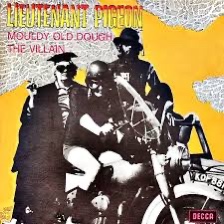
No.10
Chirpy Chirpy Cheep Cheep by Middle Of The Road (1971, No. 1)
OK, in this smorgasbord of 70s tackiness we move from Middle of the Road to Abba to Sophia Loren to Arsenal FC to Peter Marinello to Opportunity Knocks to Chick Young, and not necessarily in that order. And all to do with one the 70s most memorable and irritating song, Chirpy Chirpy Cheep Cheep. Can’t be bad (at least in Genxculture terms).
An obvious choice you might say and, yes, of course it’s obvious but that doesn’t make it less or more rubbish and in some ways its success was inexplicable but not in others. Either way, it’s worth putting under the Genxculture microscope.
Ask anyone over a certain age (OK 55-ish), which single sums up the tackiness of the 70s for them and a fair number might choose this song. Why? Well, it’s irritatingly memorable, it has very straightforward lyrics (Leonard Cohen was not involved I’m assured), it has a chorus that burrows into your psyche and an utterly weird vocal that suggests someone with adenoidal problems, sung in a quasi-American accent that really grates. That’s not to say it’s particularly awful as 70s singles go, but it does takes you back to a certain time and place, but not necessarily in a good way.
The band that eventually became Middle of the Road certainly got about a bit and spent time in Italy, where they claim to have played on Sophia Loren‘s solo album, via South America. Originally a band with a Latin American sound they were known as the grammatically inaccurate Los Caracas (should be Las Caracas I think) and won Opportunity Knocks in this incarnation.
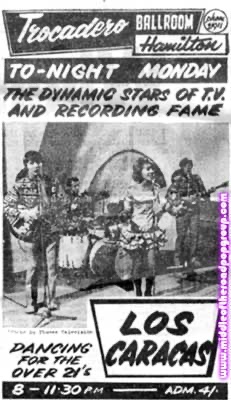
My first memory of this song was being told about it in the school playground the day after MOTR appeared on TOTP having got to No. 1. There was a buzz around this record that meant everyone was talking about it and you can understand why. Ten year olds loved the repetitive melody and, of course, so did many other people of all ages. It certainly sounded distinctive due to the rather odd, nasal vocal style of singer Sally Carr, who I think fancied herself a bit. Was this the way she really sang or was it just a way of her trying to sound a bit different? After all, Cilla Black made that sort of nasal, whining delivery hugely successful. Somehow.
So what was this ear worm of a song up against?
Chirpy Chirpy Cheep Cheep took the charts by storm in June 1971, rising a massive 18 places to oust equally as middle of the road (lower case) Tony Orlando and Dawn with Knock Three Times off the top spot. It was a particularly middle of the road (lower case) chart to be fair, but then again, the charts mostly were in those days. Neil Diamond, Tony Christie and Perry Como all figured prominently but also in the top 30 were top class artists such as Free (My Brother Jake), The Temptations (Just My Imagination), Smoky Robinson, R. Dean Taylor and John Kongos at No. 7, whose song ‘He’s Gonna Step On You Again‘ would become a breakout hit and Madchester’s calling card for The Happy Mondays in 1990. So Chirpy Chirpy Cheep Cheep was up against some musically hefty opposition, but as the charts over nearly 60 years show, middle of the road (lower case) always, sadly, prevails over quality. And this is why the charts have always been so fascinating (See ‘The Sad Demise of the Singles Pop Charts‘)

A couple of other interesting entries in this chart of 13 June 1971 in which Chirpy Chirpy Cheep Cheep was the song on everyone’s lips was Sweet whose ‘Co-Co‘ ushered in Glam Rock, and at No. 13 ‘Oh You Pretty Thing‘ by Peter No One, sorry Peter Noone, recently having gone solo after splitting from the bafflingly hugely successful Herman’s Hermits. He had recorded a song by a struggling young artist who hadn’t had a hit in almost two years, and it would be another year before he would have another hit, going by the prosaic name of David Bowie.
A final grim footnote on this particular chart finds the first football team other than the 1970 England World Cup Squad having a hit. The Arsenal squad which won the double in 1971 released ‘Good Old Arsenal‘ with words by a certain Jimmy Hill to the tune of ‘Rule Brittania.’ Their appearance on TOTP was particularly excruciating, all the players looking suitably embarrassed to be there.
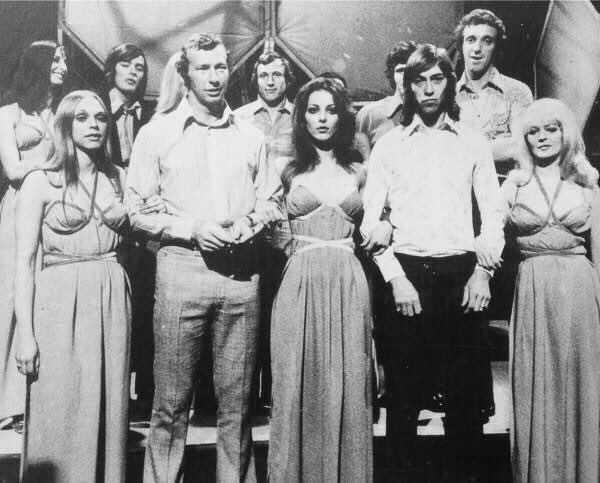
Arsenal‘s TOTP line-up included the ‘new George Best‘, Peter Marinello who looked as if he just wanted the ground to swallow him up. In a previous edition of TOTP he was asked to award some prizes to the most glamorous girls in the audience that particular week. It must be one of the most awkward moments in TOTP history, and there have been many. Tony Blackburn even manages to take the piss out of his Scottish accent, which was standard for the time.
So from Middle of the Road to Peter Marinello in one fell swoop. That’s Genxculture (.com)!
Chirpy Chirpy Cheep Cheep stayed at the top spot for 5 whole weeks being replaced by the monumental and game changing Get It On by T. Rex, a song title deemed obscene in the US, bizarrely, and renamed Bang A Gong, which just sounds silly. At the time CCCC it was the longest song ever to reach the top spot, which, I suppose, is some minor claim to fame.
Interestingly, Chirpy Chirpy Cheep Cheep was also a minor hit at the same time as Middle of the Road‘s version for Mac and Katie Kissoon, reaching a high of No. 41 but only while MOR were at No. 1. It’s a strange thing about the 60s and 70s charts that often there could be two, sometimes more than two, versions of the same song in the charts simultaneously and it was all about who was getting the most plays on radio or maybe who was the most well known as to who had the bigge hit. Publishers were only too happy to licence out a song to a number of artists as it meant a greater financial return to them in the long run.
Middle of the Road went on have four more top 20 hits over the next year, Tweedle Dum, Tweedle Dee (No. 2), Soley Soley (No. 5), Sacramento (No. 23) and Samson and Delilah (No. 26). All sounding very similar and that was about that for Middle of the Road.
MOTR’s success came a couple of years before Abba won the Euro Song Contest in Brighton in 1974. This didn’t stop MOTR claiming that they influenced the Abba sound. According to lead singer Sally Carr, Benny and Bjorn admitted on a TV interview they had used MOTR to develop their sound. Hmmm..a stretch maybe but who knows? Sally Carr also claimed to have had an offer to pose for Playboy magazine which she declined. Well, so she said. Mind you, she was married to legendary Scottish football pundit Chick Young for 6 years which was as glamorous as it got post-MOTR. Now there’s a Daily Record marriage made in tabloid heaven.
It wasn’t the greatest song ever to hit No. 1 during the 70s but anyone of a certain age will know it well. It had that simplistic and repetitive quality that stuck in people’s heads. There are few throwaway songs from that period 50 years ago which have had the staying power of Chirpy Chirpy Cheep Cheep. Yes, it’s rubbish but it’s certainly memorable and is played every week at weddings and 70s discos.
But hearing it once in a blue moon is quite sufficient.
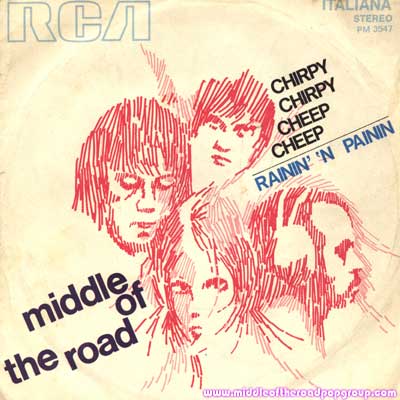
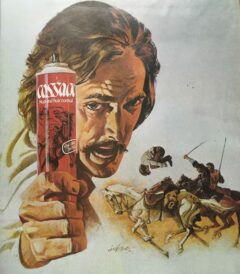
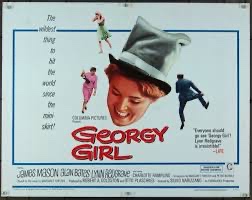
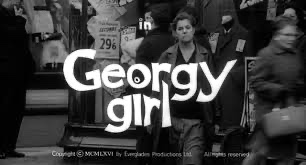
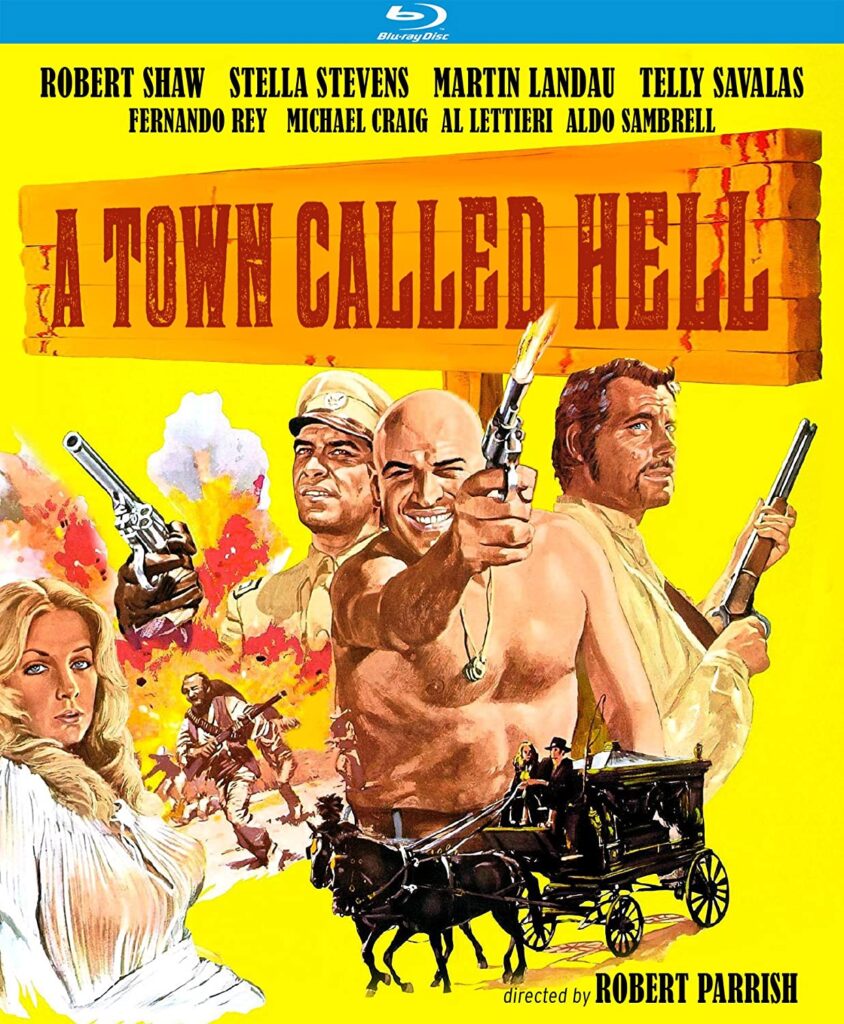
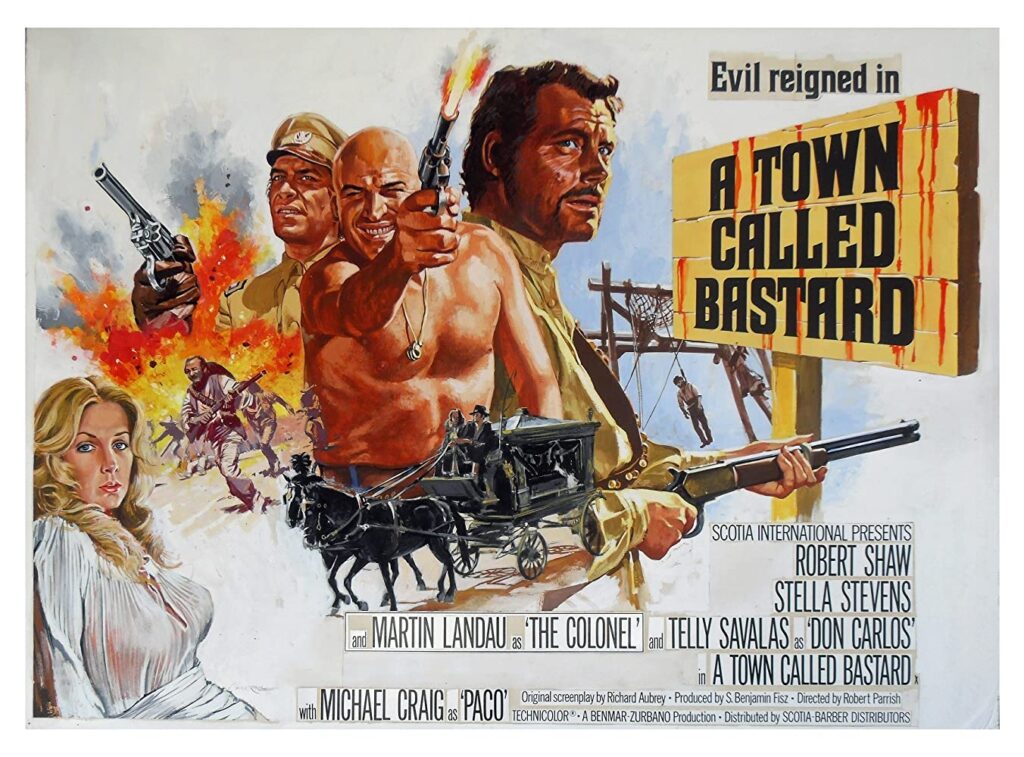
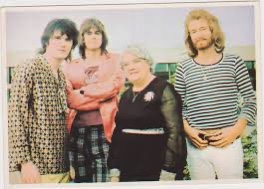
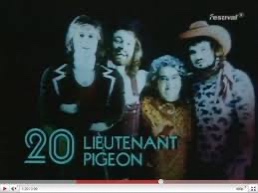
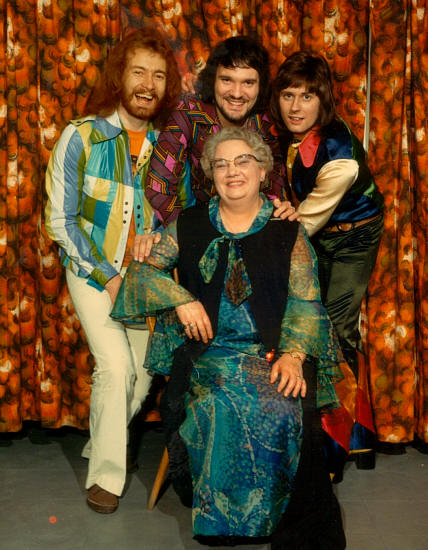
Interesting read, some good info there. The title of the Stavely Makepeace track is ‘Slippery Rock 70’s’.
It came out in 1972 on Spark but failed to chart. I collect non chart singles from the 60’s, 70’s and 80’s and have many 1000’s, this being one of them.
Thanks for that. By ‘non-chart’ do you mean not entering the top 50?